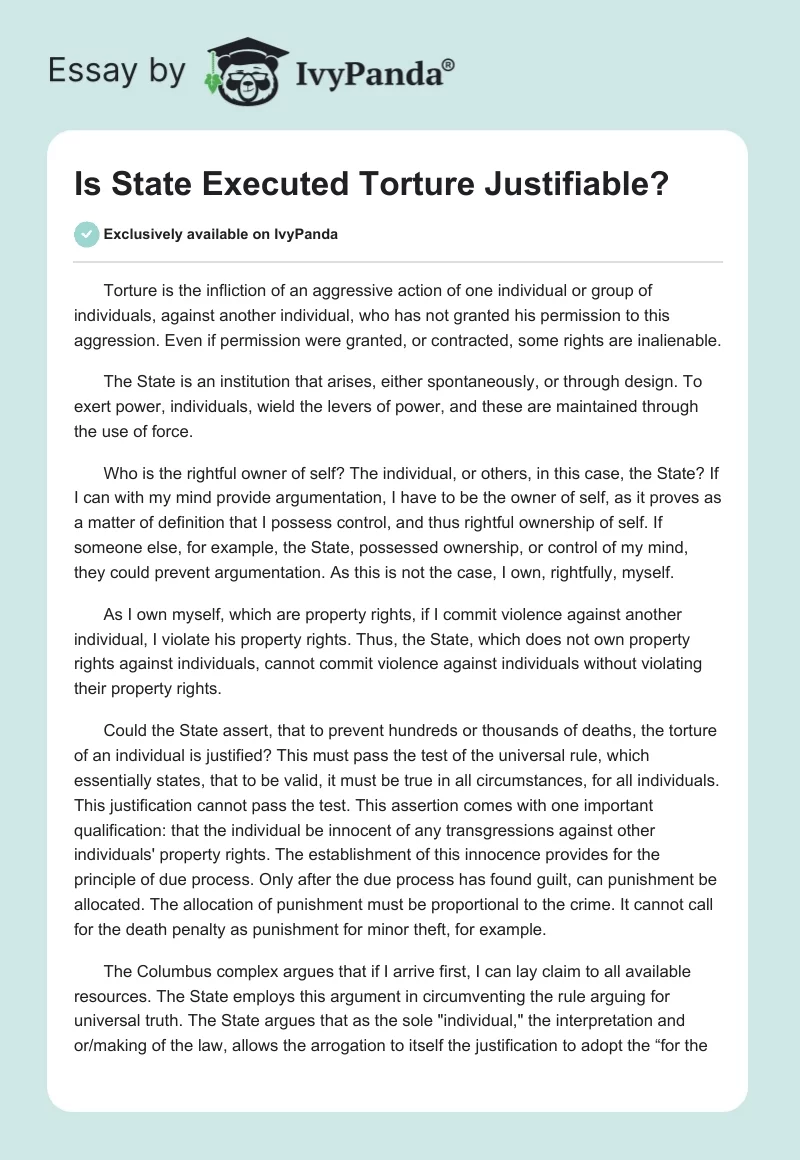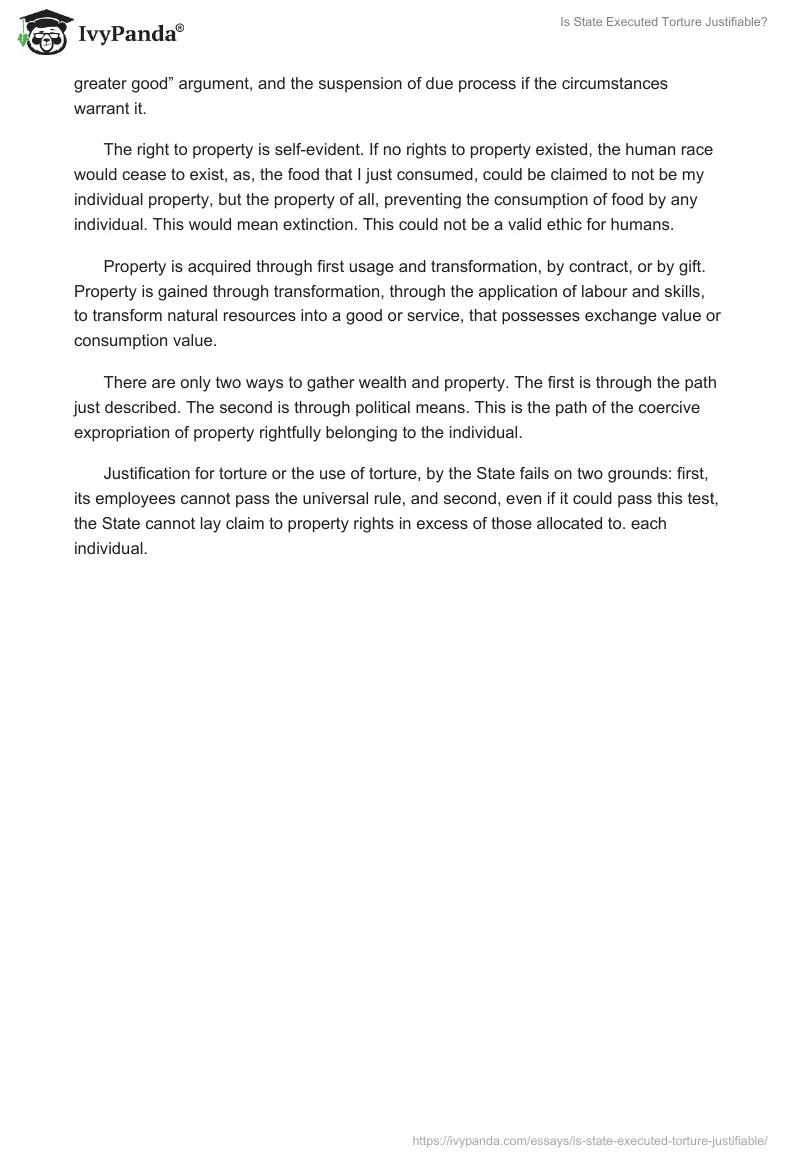Torture is the infliction of an aggressive action of one individual or group of individuals, against another individual, who has not granted his permission to this aggression. Even if permission were granted, or contracted, some rights are inalienable.
The State is an institution that arises, either spontaneously, or through design. To exert power, individuals, wield the levers of power, and these are maintained through the use of force.
Who is the rightful owner of self? The individual, or others, in this case, the State? If I can with my mind provide argumentation, I have to be the owner of self, as it proves as a matter of definition that I possess control, and thus rightful ownership of self. If someone else, for example, the State, possessed ownership, or control of my mind, they could prevent argumentation. As this is not the case, I own, rightfully, myself.
As I own myself, which are property rights, if I commit violence against another individual, I violate his property rights. Thus, the State, which does not own property rights against individuals, cannot commit violence against individuals without violating their property rights.
Could the State assert, that to prevent hundreds or thousands of deaths, the torture of an individual is justified? This must pass the test of the universal rule, which essentially states, that to be valid, it must be true in all circumstances, for all individuals. This justification cannot pass the test. This assertion comes with one important qualification: that the individual be innocent of any transgressions against other individuals’ property rights. The establishment of this innocence provides for the principle of due process. Only after the due process has found guilt, can punishment be allocated. The allocation of punishment must be proportional to the crime. It cannot call for the death penalty as punishment for minor theft, for example.
The Columbus complex argues that if I arrive first, I can lay claim to all available resources. The State employs this argument in circumventing the rule arguing for universal truth. The State argues that as the sole “individual,” the interpretation and or/making of the law, allows the arrogation to itself the justification to adopt the “for the greater good” argument, and the suspension of due process if the circumstances warrant it.
The right to property is self-evident. If no rights to property existed, the human race would cease to exist, as, the food that I just consumed, could be claimed to not be my individual property, but the property of all, preventing the consumption of food by any individual. This would mean extinction. This could not be a valid ethic for humans.
Property is acquired through first usage and transformation, by contract, or by gift. Property is gained through transformation, through the application of labour and skills, to transform natural resources into a good or service, that possesses exchange value or consumption value.
There are only two ways to gather wealth and property. The first is through the path just described. The second is through political means. This is the path of the coercive expropriation of property rightfully belonging to the individual.
Justification for torture or the use of torture, by the State fails on two grounds: first, its employees cannot pass the universal rule, and second, even if it could pass this test, the State cannot lay claim to property rights in excess of those allocated to. each individual.


